#T’ang Dynasty
Text
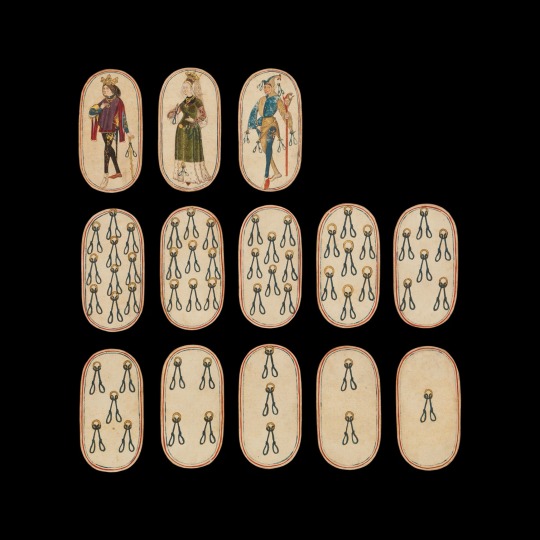
It is not known how these cards were played, but almost all card games from 15th century Europe involved some form of gambling. Since at least the 7th century, people throughout the world have used used cards for games or as collector's items. Photograph By The Metropolitan Museum of Art, New York
The Original Pokémon? A Visual (Ancient) History of Trading Cards
Our love of playing cards dates farther back than you think—perhaps as far back as the T’ang Dynasty. Here’s a look at their colorful past.
— By Elaina Zachos | November 3, 2023
In a world filled with endless entertainment, some of the simplest and most enduring sources of amusement can be found in a deck of playing cards.
For centuries, these unassuming game pieces have held a special place in the hearts and hands of people across the globe. From the hand-painted cards of T’ang Dynasty China to paper-and-plastic Pokémon trading cards, the history of playing cards spans cultures, epochs, and continents.
When The Walt Disney Company celebrated its 100th birthday last month, everyone got to take part in this century’s-long tradition with TikTok’s new digital playing card game. As a member of the mouse-eared family, Nat Geo saw over four million new followers scurry to our TikTok account, mostly to trade these digital cards.
This got us thinking—what’s the history of playing cards anyway?
China A.D. 600-1600s
It’s unclear when and where playing cards were invented, but they were popularized in China more than a thousand years ago. References to “domino cards” existed as early as the T’ang Dynasty, which lasted from 618-907 AD. Some historians, however, say playing cards took off during the 10th century. Either way, these cards were originally hand-painted on paper or parchment.
Fast-forward a few hundred years to the Ming Dynasty—which lasted from 1368-1644 AD—and you’ll find playing cards gaining steam. At this point, some cards had images of characters from popular novels. Others were “money cards” with suits inspired by old Chinese currency.
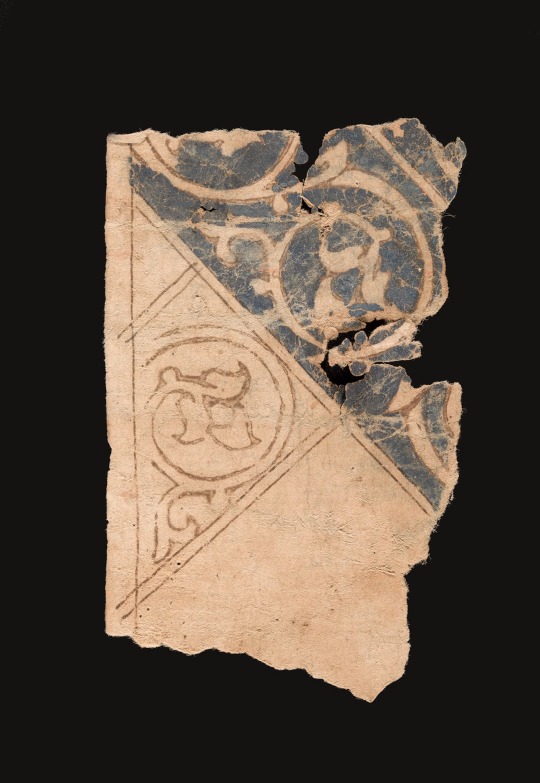

Left: These playing card fragments date to 13th and 16th century Egypt and are remarkably similar to those used today, with fifty-two cards divided into four suits: cups, coins, swords, and polo sticks.
Right: Unlike their Western counterparts—the king, queen, and jack—Mamluk court cards do not feature figural imagery but are identified through a combination of symbols and label-like inscriptions. Photographs By Museum Associates/LACMA
Egypt 1300s-1500s
From China, playing cards were likely carried to the Middle East via the Silk Road.
One deck dates back to the Mamluk Sultanate of Egypt, which ended in 1517. These hand-painted cards were adorned with intricate calligraphic rhymes and likely belonged to a wealthy owner. They carried suits of coins, cups, swords, and polo sticks. Each suit would have had 13 cards, including three all-male court cards: the King, the Lieutenant, and the Second Lieutenant.

These French playing cards were made in the 18th century. The suit, hearts, are hidden in the cartoonish faces depicted on the card. Photograph By The Trustees of The British Museum
Italy, Spain, and France 1400s-1700s
There’s wide speculation on how playing cards eventually made it to Europe, playing card historian Peter Endebrock told Atlas Obscura in 2020. But most historians agree they suddenly showed up by the end of the 1300s, possibly introduced by Crusade-era soldiers.
Europeans loved these cards. Hand-painted and elaborately designed, playing cards were originally a luxury good popular among the wealthy. However, printing presses and stencils eventually helped to simplify the patterns on the cards and made them more accessible to a wider audience. By the 15th century, playing cards could be found throughout the continent’s inland trade routes.
In the Middle Ages, playing cards began to take on divination capabilities, which marked a significant shift in the use of the cards. For example, the Tarot deck, originally for competitive card games, later morphed into a tool for fortune-telling.
Today, the 52-card French deck is the most famous playing card deck. Its four suits (hearts, diamonds, clubs, and spades) and two colors (red and black) are well-known to players around the world. The deck’s popularity is partially due to its simple design and because it was a favorite among the most prominent imperialist powers: France, the United Kingdom, and the United States.
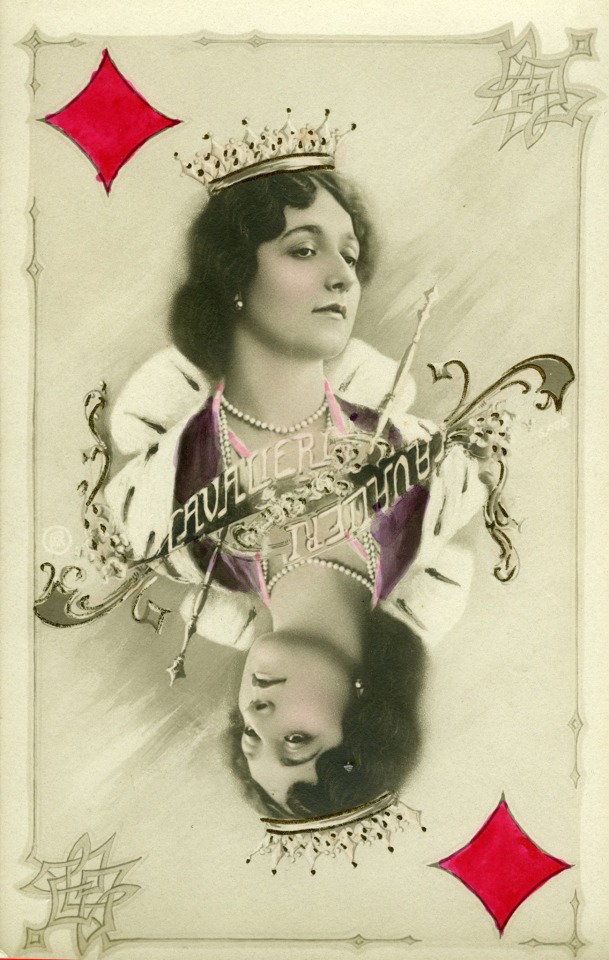
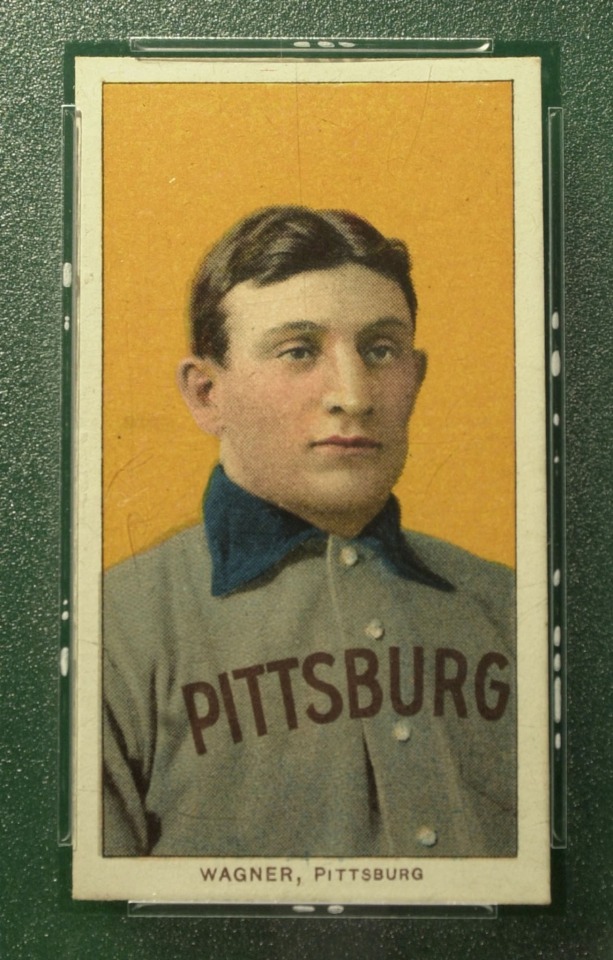
Left: Early collectible cards didn't just feature athletes—some depicted celebrities. The women show here was French dancer Cleo de Merode, who lived from 1875 to 1966. Photograph By Transcendental Graphic/Contributor
Right: Honus Wagner was an American baseball player during the turn of the century. The baseball card seen here sold for a record $7.25 million in 2022. Photograph By Chris Hondros, Newsmakers/Getty Images
U.S. Athletes and Celebrities 1800s-1900s
Heavily taxed playing cards circulated in the American Colonies before the Revolutionary War. After, U.S. printers began making their own copies. Americans eventually introduced Joker cards to French decks around 1860.
Trading cards, similar to TikTok’s Disney100 collectibles, originated as “trade cards” around the same time as jokers. First sold as advertising cards, they were packaged up with cigarettes to keep the packaging stiff.
Multi-color printing around the turn of the century made trade cards even more popular. Although the cards were not related to specific products, companies began including them in packaging as a sort of prize for consumers. By the time baseball became a professional sport, sports trade cards were printed and sold in candy and tobacco products.
Members of the public began collecting these cards and trading them with each other. In the 1930s, companies began printing athletes’ biographies on baseball cards and selling them in packs of bubble gum. By 1949, Topps Chewing Gum was including cards of athletes, cinema stars, and big game hunters in their products. People started viewing sports cards as valuable collectibles in the 1980s, despite their low monetary worth years earlier.

Inspired by the video game, Pokémon cards are used both as collectors items and as game playing cards. Some rare cards are worth thousands of dollars. Photograph By Oreolife/Alamy Stock Photo
Pokémon 1990s-Present
Trading cards morphed into gameplay by the close of the 20th century. In 1993, while working on his PhD in mathematics at the University of Pennsylvania, Richard Garfield invented Magic: The Gathering, which is one of the most well-known trading games today.
Around the same time, a game designer and an illustrator in Japan pitched Nintendo on a game called Pocket Monsters. In 1996, Pocket Monsters—which would later be renamed Pokémon—was released as a video game and went on to sell millions of copies.
Months later, a companion trading card game was produced, which contained 102 illustrated cards. One year after the U.S. release of Pokémon in 1998, the Pokémon Trading Card Game was introduced to North America by the same company that created Magic: The Gathering. More than 30 billion Pokémon cards have been printed today.
#History | Trading Cards#Original Pokémon#T’ang Dynasty#Elaina Zachos#National Geographic#The Walt Disney Company#Egypt 🇪🇬 | Italy 🇮🇹 | Spain 🇪🇸 | France 🇫🇷 | China | US 🇺🇸
1 note
·
View note
Text
Great Sage Emperor
Those who have read Journey to the West (1592) will remember that it is Tang Emperor Taizong (唐太宗) who sends Tripitaka on the quest to India. Well, I was interested to learn that the monarch's historical posthumous title includes "Great Sage" (Dasheng, 大聖):
Wenhuang 文皇 (The August Cultured [Emperor]) ... is the original posthumous title given to Li Shimin following his death in 649. The title was expanded to "Wenwu Sheng Huangdi" 文武聖皇帝 (The Cultured Military Sagacious August Emperor) in 674 and was later again changed to "Wenwu Dasheng Daguangxiao Huangdi" 文武大聖大廣孝皇帝 (The Cultured Military Grand Sagacious Grand Extensive Filial August Emperor) in 754 (Jiu Tang shu, 3.62-63) (Nienhauser, 2010, p. 202 n. 34).
My own clunky translation for the latter is the "Great, Universally Filial Emperor and Great Sage of Civil and Military Affairs." [1]
His title is interesting because, as I've mentioned elsewhere, Taizong bestows Sun Wukong's literary precursor, the "Monkey Pilgrim" (Hou xingzhe, 猴行者), with the name “Great Sage Steel Muscles and Iron Bones” (Gangjin Tiegu Dasheng, 鋼筋鐵骨大聖) at the end of the 13th-century JTTW (Wivell, 1994, p. 1207).
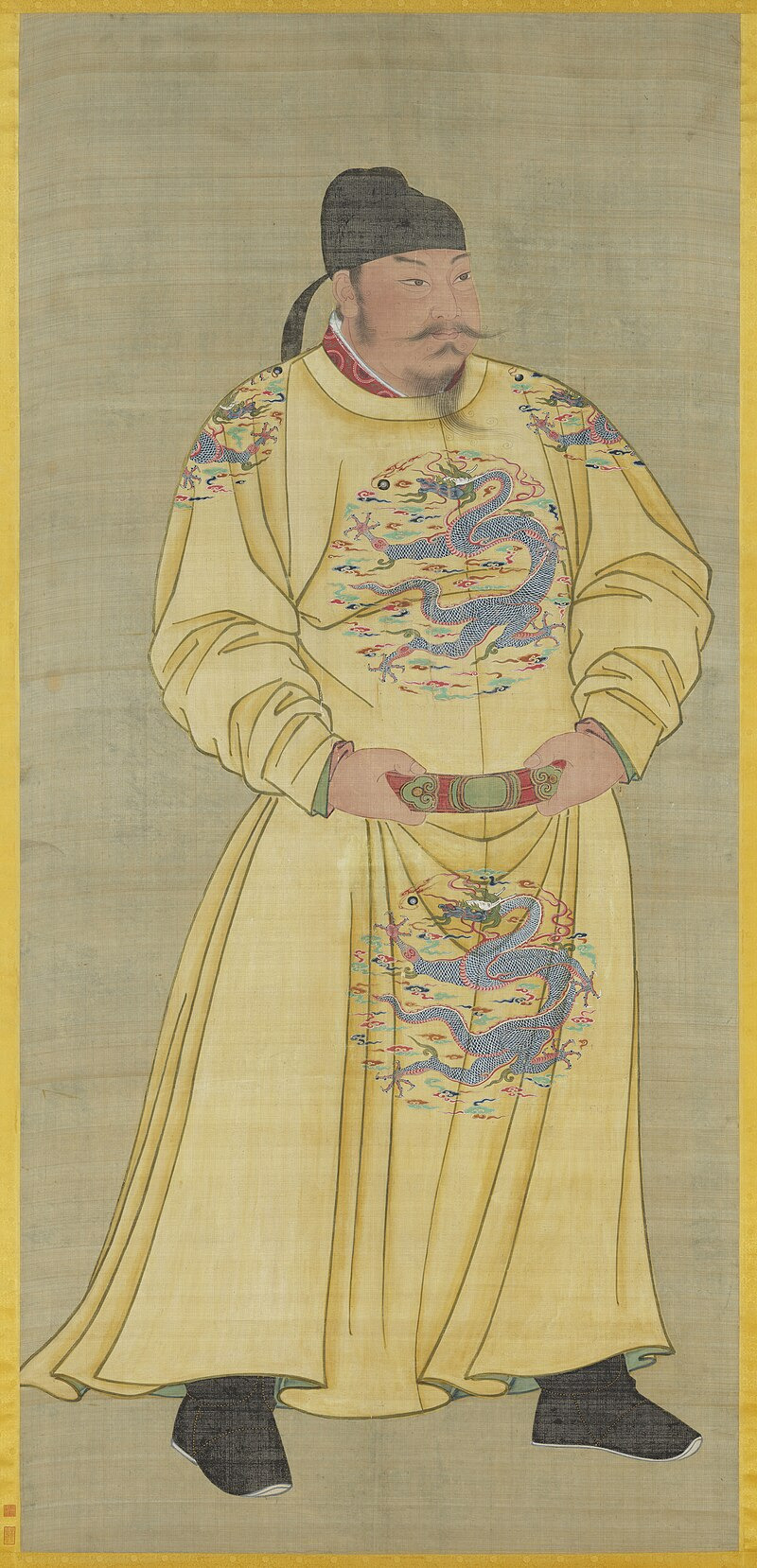
Note:
1. The guangxiao (廣孝) of Wenwu Dasheng Daguangxiao Huangdi (文武大聖大廣孝皇帝) means to be filial to everyone, so I went with "Universally Filial."
Sources:
Nienhauser, W. H. (2010). Tang Dynasty Tales: A Guided Reader. Japan: World Scientific.
Wivell, C.S. (1994). The Story of How the Monk Tripitaka of the Great Country of T’ang Brought Back the Sūtras. In V. Mair (Ed.), The Columbia Anthology of Traditional Chinese Literature (pp. 1181-1207). New York: Columbia University Press.
#sun wukong#monkey king#journey to the west#jttw#Tang Taizong#Chinese emperor#Great Sage#lego monkie kid#LMK#Tang dynasty
35 notes
·
View notes
Text
Introduction to 'Figured Stones' by Paul Prudence
All over the world are scattered stones that contain tiny kingdoms of petrified forests and model mountains. These stones, with their imagined societies of people, their animals and mythical creatures, await to do trade and form alliances. In each rock you may find exotic gardens, encrusted cliffs and the wrecks of ruined palaces. And every space is overrun by lichens, vines and exotic herbs. That ‘figured stones’ have been prized for their mimicry of miniature topographies of Lilliputian beauty is well attested by the great collections as far back as the T’ang dynasty. But even before that era of great adoration, these rocks had already weathered their apparitions into the human imagination. The pre T’ang literature tells of strange rocks in wild places that took the form of dragons, saints and even monsters. And the metaphysics of the microcosm found an early apogee in the emperor’s magic monuments made entirely from these stones.
Erosion, whose secrets are occluded only by time itself, has been busy; slowly dissolving rough rock into miniature worlds. The flow of water – that fertile archetype of time itself – has worn tiny rivers and valleys into stone, copying those processes of the greater world. Time flows through water and time flows through rocks, transforming them into mirror-worlds by attrition. And with more time these tiny streams in stone are turned into caves and tunnels which burrow down into the foundations of our own subconscious worlds. These sunless chambers form the perfect refuges for the dreamt-up denizens of our inflamed imaginations.
Nature has summoned its blind forces to create a fractal dimension, for each rock is a replica that exposes all the processes by which the world fully reveals – and comprehends – itself. As diminished echoes of the earth’s own features, figured stones offer us foci for studying a sense of planetary introspection. In depicting the greater essences of its smaller self, nature’s trick becomes a form of self-awareness – nature’s ‘that I am’ is cast into solid conscious form as the geological recollections of a former world are made manifest. The ghosts of stratified histories cascade through time and leave their marks in rock as totems or as scripts, or as tiny worlds, complete.
—Paul Prudence, Figured Stones: Exploring the Lithic Imaginary
#quote#Paul Prudence#Prudence#Figured Stones#stones#geology#nature#natural philosophy#philosophy#vibrant materialism#deep time#time#archeology#archaeology#rocks#rock
24 notes
·
View notes
Text
Resource List
List of freely-available online sources only, some of which are translated into English. Will be updated sporadically.
Last update: Nov 26, 2022.
GENERAL (English)
A Chinese Bestiary by Richard E. Strassberg
A nice if incomplete translation of the Classics of Mountains and Seas (Shanhaijing) that focuses on the creatures. It goes into considerable detail and background, unlike Anne Birell’s direct translation. It does not, however, translate the numerous sections listing mountains with no creatures.
The Nine Songs translation by Arthur Waley (Available on the Internet Archive)
A translation of the Nine Songs from the Songs of Chu.
Six Chinese Classics translation by A. Charles Muller
Consists of Analects of Confucius, Great Learning, Doctrine of the Mean, Mencius, Daode jing and Zhuangzi (Chapters One and Two)
Book of Poetry translation by James Legge
300 Tang Poems (Available online) (Alternate link)
“Sui-Tang Chang'an” by Xiong Cunrui
An unbelievable resource for anyone seeking information on the Chang’an city during the Sui and Tang dynasties. It has maps and fully listed names of all the wards and Imperial City interior buildings, and even a compiled list of known inhabitants of the city as well as which wards they were reportedly living in.
Brill Chinese Reference Library: Title of Officials translation by Michael Loewe
Translation of titles from the Hanshu, I believe.
The T'ang Code, Volume I: General Principles translated by Wallace Johnson
The T’ang Code, volume 2, Specific Articles translated by Wallace Johnson
Tang dynasty law code. Can probably also double as “tag yourself” meme if you want.
“Epidemic and population patterns in the Chinese Empire (243 B.C.E. to 1911 C.E.)” by A. Morabia
The Ideology of the Guqin
USEFUL SITES
cbaigui.com
A wonderful site compiling bestiary entries from many ancient Chinese texts, including but not limited to Diagrams of Bai Ze, Old Book of Tang, Book of Rites, etc. You can search them sorted by book or by dynasties, which is a feature I never knew I needed until I saw it.
ctext.org
We know it, we love it, the MVP that compiles so many of ancient texts, and some of them have translations (by James Legge) too.
In Conversation with China Youtube Channel
Collection of online talks/lectures on various topics, including Classic Chinese grammar, Dunhuang Cave Manuscripts, etc. Personal biases, but some of my favorites are the ones by Sarah Allan, Donald Harper, and the series that explores the definition, perception, and treatment towards those with disabilities in early China.
Wikisource 古文 Category
I really just stumbled upon this looking for 白泽精怪图 but it has a number of misc texts in Traditional Chinese.
chinaknowledge.de
Another classic. It’s an incredible site for anyone looking to jump into a specific topic; you can pick up from there.
100jia.net
It’s kind of a headache to navigate it at the start but the link provided should send you to a page with a long list of ancient Chinese classic texts as well as several existing online translations of them. It’s in German, yes, don’t mind it.
Resources on Chinese Legal Tradition
TANG DYNASTY SPECIFIC
"The Reconstruction of Yongning Ward" by Heng Chye Kiang and Chen Shuanglin
Details a theoretical and digital reconstruction of a particular ward of Chang’an during Tang dynasty, including population estimate.
The administrative divisions of the Tang dynasty
唐朝官员品级 Tang dynasty official positions ordered by rank
中国俸禄制度史 The history of China's salary system
CREATURES, FOLK RELIGION, ETC
"The Textual Form of Knowledge: Occult Miscellanies in Ancient and Medieval Chinese Manuscripts, 4th Century BCE to 10th Century CE" by Donald Harper
I’m not even gonna try to describe it right now you can figure it out by reading the title
Ho Peng Yoke books on Archive.org
Includes "Chinese Mathematical Astrology: Reaching out for the stars" and "Explorations in Daoism Medicine and Alchemy in Literature".
龙是如何进化的:龙纹史考 by 陈涤
A post that chronicles the development and changes to the form of the dragon across dynasties.
龙头鹿身的就是麒麟?都弄错了!麒麟的秘密大公开! by 天可汗文化
A post that chronicles the development and changes to the form of the qilin across dynasties.
“Bai Ze special” by 哀吾生之須臾
白泽特辑【一】「白泽」的传说
白泽特辑【二】「白泽」的形貌
白泽特辑【三】「白泽图」的相关概况
Bai Ze, Ephemera and Popular Culture by Donald Harper (paper available on the Methods on Sinology site, but site is under construction)
白泽志怪 by 白泽君
One man’s attempt to piece together Diagrams of Bai Ze and explore Bai Ze as a myth. This particular post attempts to put together the surviving entries of the lost text.
37 notes
·
View notes
Text
The Secret History: a Ridiculous, Morbid Comedy
by Cassandra Isobelle [July 20, 2023]
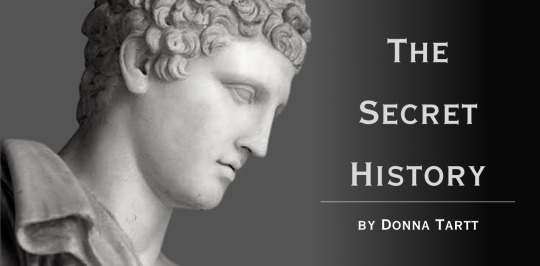
The Secret History by Donna Tartt
There is so much to say about this book, but really, I do not know where to start or how to make my thoughts blend seamlessly from one to the other. I was entranced, right off the bat, by Donna Tartt’s incredible use of words, and found myself attaching tabs more than I usually do. Placing marks on words that have struck me, whether it be intellectual statements, wtf moments (I had a lot of these), or funny jabs at the characters.
The first line I’d highlighted in the book is this:
I believe that it is better to know one book intimately than a hundred superficially.
Page 31 of The Secret History [Vintage Contemporaries print]
It is so conforming with something a friend of mine had once told me. He explained having to truly immerse yourself to the point of becoming the same person as in a tribe or culture of the language you are learning—how more authentic that act is than simply having the capability to speak multiple languages, whose cultures you know not one thing about.

Grilled Cheese Sandwhich.
I caught on, pretty soon, that although the book revolved around murder and other serious topics, that it was meant to be humorous. None of these guys were men at all, except maybe Francis, who, correct me if I’m wrong—the book is still fresh in my mind and I may have overlooked some flaws—seemed the closest to being sane and likable. Henry, for one, was so hard to take seriously. His character was laughable—an example of an ideal man in the dark academia aesthetic—the way he liked to speak of the smallest things with profound and articulate metaphors, which, when observed from a detached point of view, seemed almost like nonsense.
By the second day I was having my doubts, and then, on the afternoon of the night itself, Charles saw him in Commons eating a grilled cheese sandwich and a milk shake. That did it.
Page 167 of The Secret History [Vintage Contemporaries print]
I don’t know where Henry was. Probably looking at the moon and reciting some poem from the T’ang Dynasty.
Page 458 of The Secret History [Vintage Contemporaries print]
Henry wasn’t the only unlikeable character in the book, of course. Even our dear, Richard Papen, the narrator of this story, frustrated me on multiple occasions. He sort of mocks the group for coming from rich families with their trust funds and monthly allowances, when he himself is no better for continually wanting to impress them and doing nothing of their egotistical traits. Tolerating. Participating.
Being the only female in what was basically a boys’ club must have been difficult for her. Miraculously, she didn’t compensate by being hard or quarrelsome. She was still a girl, a slight lovely girl who lay in bed and ate chocolate, a girl whose hair smelled like hyacinth and whose scarves fluttered jauntily in the breeze.
Page 224 of The Secret History [Vintage Contemporaries print]
Camilla, I believe, was so much more than what Richard made her out to be. We know so little about her character except for Richard’s romanticized description of her ever-so-breathtaking beauty, which makes me think we do not have the full story. I like to imagine that if this had been told from her perspective, we would be much closer to the truth behind these murders.
Julian being completely blind to these occurrences until the last chapters? Skeptical, considering how close he had been with Henry in comparison to his other pupils.

I do not know what to believe and assume about the story, but all I know is that Richard had certainly missed a few details. The Secret History was pure comedy, a satire that made me completely love Donna Tartt and her mind. I stood in the middle of my room after reading this book and laughed, wondering how someone could be as skilled as she is to have written this modern classic. It was hard to grasp my mind on how beautiful the storytelling and imagery were.
I read something that Alfred Hitchcock said. He said suspense doesn’t come from having a bomb thrown from nowhere at the hero. Suspense comes from having two people sitting, talking at a table. There’s a bomb ticking underneath the table, and the audience sees it but the characters don’t. And that’ what suspense is.
Donna Tartt in an interview with Charlie Rose (1992)
And, oh, before anyone asks … Do I think Bunny deserved to die? No, he was a pretty funny guy sometimes. But would I have been tempted to kill him if I were his friend? Maybe. Yes. Surely.
#the secret history#donna tartt#book review#dark academia#psychological thriller#literature#greek literature#richard papen#camilla macaulay#charles macaulay#henry winter#francis abernathy#hampden
16 notes
·
View notes
Text
The role and use of cannabis in human culture is hard to underestimate, its use probably going back 10,000 years or more. We know for certain that it was grown in China and used in textiles since around 4000 BCE; inscriptions from the Zhou Dynasty (700–500 BCE) show that its effects as an inebriant plant were well known from that age onward, to culminate in a very explicit reference to its sacred powers.
In the Zhouli, a collection of ritual lyrics from the third century BCE, we find mention of fields of sacred hemp. Multiple sources suggest its effects and properties were well known. In addition, “the use of Cannabis as a hallucinogenic drug by necromancers or magicians is especially notable. It should be pointed out that in ancient China, as in most early cultures, medicine has its origin in magic. Medicine men were practicing magicians.” It was used to “communicate with spirits and lightens one’s body.”
In Taoist sources of the fifth century CE, we find mention of its use, mixed with ginseng, by necromancers to gain the power to foresee and make predictions about the future. Interestingly, a distinction is made between the medical properties of the nonpoisonous parts of the plant, used for prescriptions, and the ones containing the active principles, employed for magical activities:
Worthy of note is the work of the famous physician T’ao Hung-ching, of the 5th century A.D. In his Ming-i pieh-lu, he noted the difference between the nonpoisonous seeds [ma-tze] and the poisonous fruits [ma-fên]. Of the latter he said, ‘Ma-fên is not much used in prescriptions [now-a-days]. Necromancers use it in combination with ginseng to set forward time in order to reveal future events.
A later work, the Chêng-lei pên-ts’ao by T’ang Shêng-wei of the tenth century, contains a detailed description of the effects of the ma-fên. Even in this case, we find an appreciation of its medical properties paired by seemingly supernatural qualities:
Ma-fên has a spicy taste; it is toxic; it is used for wase diseases and injuries; it clears blood and cools temperature; it relieves fluxes; it undoes rheumatism; it discharges pus. If taken in excess it produces hallucinations and a staggering gait. If taken over a long term, it causes one to communicate with spirits and lightens one’s body.
[...]
Archeologists made a singular discovery inside the so-called Yanghai Tombs, in the northwestern Chinese region of Xinjiang: a small lidless basket was found placed near the remains of a forty-year-old Caucasoid male, together with his horse-riding equipment, bow, arrows, and musical instruments. A detailed study determined that the basket contains cannabis leaves, fruits, and shoots dating from 2,500 years ago. The funerary objects buried alongside the individual led scholars to identify him as a shaman:
The funereal objects in his tomb were richer than those in the others, which demonstrates his special status. Together with the musical instrument and the Cannabis, which are unique among the Yanghai Tombs, the shamanistic status of the deceased becomes all the more apparent. Due to its apparently prolonged use as a pestle, the inner surface of the wooden bowl containing Cannabis had become smooth, and one side became perforated. The Cannabis was presumably pulverized with a mortar before being consumed for psychoactive purposes. Thus, we assume that the deceased was more concerned with the intoxicant and/or medicinal value of the Cannabis remains…. The deceased, presumably a shaman, may have been mainly concerned with the ritual of communication between the human and the spirit world. The gift of Cannabis may have been to enable him to continue his profession in the afterlife.
[...]
The intoxicating qualities of hemp resin are mentioned in the Zend Avesta (around 600 BCE), while its use as inebriating incense is attested among the Assyrians since the ninth century BCE, enabling us to map an area stretching from the Middle East to eastern Asia where the drug was known and used for medical and ritual purposes.
In India, as already mentioned, its association with religion has been attested to for some time. In the Atharva Veda (between 1200 and 1000 BCE), it is mentioned as one of the five holiest sacred plants, addressed by the worshippers with special prayers: “The five kingdoms of plants, having Soma as their chief, we address; the darbha, hemp, barley, saha—let them free us from distress.”
[...]
It is especially relevant to mention the presence of cannabis in The Garland of Jewels of Yoga, attributed to Nagarjuna. This tantric text comments upon the effects of using cannabis as an effective way to confuse one’s enemies, making them believe they are the prey of evil spirits.
-- The Oxford Handbook of Global Drug History
7 notes
·
View notes
Text
F. KEITH WAHLE
"Sonnet"
You realize, even as you start this
that it won’t end up as a sonnet—
and by “sonnet” I don’t mean just a poem
in fourteen lines—or all right, fourteen lines, if
you insist, and iambic pentameter,
with a couplet at the end, but that’s not
all it takes to make a sonnet;
a real sonnet has a certain movement
of ideas, a special way the argument
reveals itself, with a shift in the point
of view at the middle of the poem,
or just past the middle, at the end
of the eighth line. This goes for either the
Italian or Elizabethan form.
And at the library you can get those
anthologies from the twenties and thirties
of local poets, meaning amateurs,
and they all seem to be writing sonnets,
or what they thought were sonnets; sonnets
on every imaginable subject:
Abraham Lincoln, Dante, Italy,
the months, the holidays, Lake Erie, death
and the death of children, larks, cardinals,
seashells, insomnia, Elizabeth
Tudor, and Mary Stuart, everything.
They even wrote sonnets about writing
sonnets. I found one about why
Shakespearean sonnets are better than
Italian sonnets. But none of these sonnets
are any good. The rhymes are all in the
right place, but the people who wrote them
had no idea what a sonnet can do
or even what poetry can do.
So the hell with those assholes. They’re all dead
now anyway, or soon will be, thank goodness.
In more recent times the term sonnet
has been used very freely, and the form
has become extremely loose. But some
of the modern sonnets are very good,
such as Robert Lowell’s sonnet on
Harpo Marx or his sonnet on Ezra Pound.
But one keeps getting back to the question
of writing, how it is done, and whether
it is fun. Certainly there are other things
that are more fun—going to bed with
attractive men or women, or eating
Chinese food. One thinks of the T’ang Dynasty,
the golden age of Chinese poetry—
in three hundred years, some of the best
poets ever in any language.
Li Po is the best known in this country,
though Tu Fu was probably a better poet,
and Po Chu I was more versatile.
But even after these three were dead, there
were many great and beautiful poets;
like Han Shan, the Cold Mountain hermit,
and Li Ho, the demon poet; and we
must not forget the great landscape poet,
Wang Wei, who was contemporary with
Li Po. Ezra Pound’s translations of Li Po
are the most exciting in English,
though perhaps not the most exacting
from the sinologist’s point of view.
Li Po was an habitual drunkard,
and wrote in a style that was rather free,
at least by the standards of ancient China.
Tu Fu, on the other hand, wrote in
a style called “regulated verse” (lü-shih),
which is an eight-line form with even
stricter rules than our sonnet, and died,
according to the legend, from eating
Chinese food, or rather, too much Chinese food.
He was trapped in the mountains by a flash flood,
and after starving for several days
he overate at a banquet and died
when the rice swelled up and ruptured his
intestine. This story may not be true.
Li Po and Tu Fu were great friends in their
lifetimes, just as Pound and Yeats were great friends,
and went to Chinese restaurants together,
all of which leads one to ask oneself,
“Will I ever be a truly great poet,
or even the friend of a great poet?”
Not likely. But to be a good poet
may be quite within the reach of many people.
It seems to require initially
an ability to listen with trust
to the little voices you have inside,
the voices that tell you what to do,
and how to write, like the one right now that’s
saying, “This is no sonnet, you damn fool;
it doesn’t even look like a sonnet.”
0 notes
Text
That was Ingrid Magnussen. She made up the rules and suddenly they were engraved on the Rosetta Stone, they’d been brought to the surface from a cave under the Dead Sea, they were inscribed on the scrolls from the T’ang Dynasty.
-White Oleander
#quotes#book quotes#literature#books & libraries#life quotes#janet fitch#white oleander#ingrid magnussen
1 note
·
View note
Photo
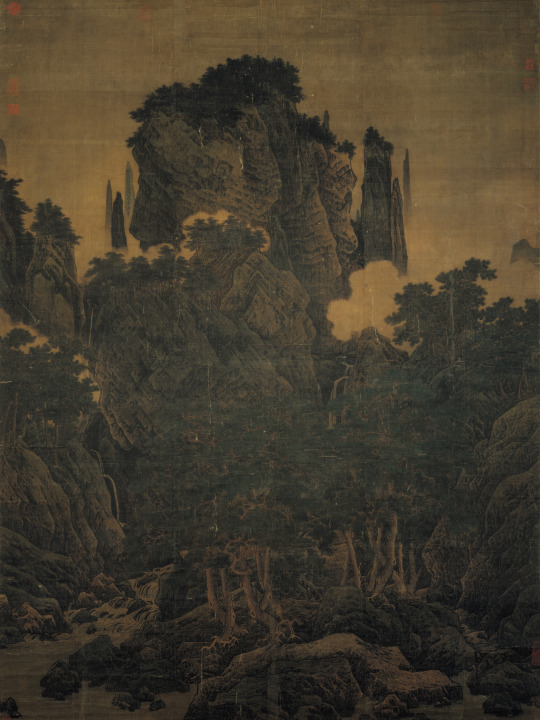
Li T’ang (ca. 1070—after 1150), Wind in Pines Among a Myriad Valleys, Song dynasty (960-1279 C.E.), National Palace Museum, Taipei.
1 note
·
View note
Text
“Golden Age”

Japan’s history and explanation of “The Golden Age”
I just realized I ever made this simple explanation of the Heian period, Onmyoudo, and the modern adaptation of that stuff. I made this last year and ever posted it on Twitter. I took Japanese literature during my college time but was not really good at this kind of stuff (I was more focused on literature rather than the culture), but I would like to share what I know. Let me know if there is any mistake you found here and don’t be scared to correct me if I’m wrong. Thank you.

Starting in the 6th century, in East Asia, things also happened there and one of them was the influence of faith and religion. Confucianism from China and Buddhism from India started influencing Japanese society during that time. Back then, the government of Japan was ruled by aristocrats.
No longer after that, during the 7th century, a lot of scholars and monks were sent to China to study. At the same time during the end of the 7th century, Japan began to know the terms Tennou (天王) and Nihon (日本).
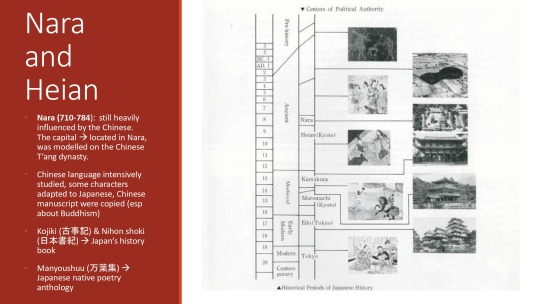
The highlight of this explanation is the Nara and Heian periods.
Nara period (710-784) was the era where everything was still heavily influenced by the Chinese. The capital during that time was located in Nara and the capital was modeled on the Chinese T’ang dynasty. The Chinese language was intensively studied, in most of the government documents were using Chinese. During that time, some characters were also adapted to Japanese. Japan also copied Chinese manuscripts (especially about Buddhism).
The grand results during this era were Japan’s well-known storybooks: Kojiki (古事記) and Nihon Shoki (日本書紀). Manyoushuu (万葉集), the famous Japanese native poetry anthology was also written during this era.
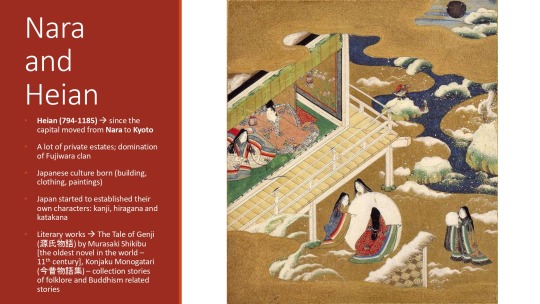
Moving on to Heian, this is the special era that became the title of this simple explanation.
The Heian period (794-1185) was the era when Japan started to become its real self. The Heian period started when the capital was moved from Nara to Kyoto. Even though the Imperial House seemingly hold power on the surface, behind them, the Fujiwara clan is controlling the government. Japanese culture was also born during this era (building, clothing, paintings). Japan also started to establish its own characters in its language (kanji, hiragana, and katakana).
The famous literary work that was born during this era was The Tale of Genji (源氏物語) by Murasaki Shikibu. It is also said that this work was the oldest novel in the world. Another work that is worth knowing is Konjaku Monogatari (今昔物語), the collected stories of folklore and Buddhism related stories. A lot of them are about the encounter between human and spiritual beings. For example, tales of encounters with Hyakki Yakou ( 百鬼夜行 ) or Night of Hundred Demons, tengu, or various other obake.

Back to the history books that were mentioned before, I’d like to talk a little bit about it. The first is the Kojiki. It is also said as the “Record of Ancient Matters”. Kojiki is considered the sacred text of the Shinto religion. It consists of myths, legends, and historical accounts from the earliest days of creation up to the reign of Empress Suiko (628). It became the source for ceremonies, customs, divination, and magical practices of ancient Japan.

Next, Nihon Shoki (日本書紀). It is also known as Nihon gi. This work is considered the “official history of Japan”. It consists of 30 chapters that conclude with myths, and legends of ancient Japan, and is also an important source of Shinto. The late chapters that start from the 5th century and so on talk about several powerful clans as well as imperial families.

Another stuff that I want to talk about here is Onmyoudo (陰陽道).
Onmyoudo is the Japanese traditional esoteric cosmology, a mixture of natural science and occultism. It is also called “the way of yin and yang”. It was influenced by Taoism, Confucianism, and Buddhism. At first, this Onmyoudo wasn’t considered a religion, but in the 5th-6th century and also late 7th century, it finally became an independent faith. In the 9th century, Onmyoudou interacted with Shinto and Goryou and then developed a new unique system in Japan. It is also becoming the latest hit in the Heian period because during this era everyone believes that most phenomena are caused by spiritual-related things.
The activities in Onmyoudou include astronomy, calendar-making, the reckoning of time, divination, observing nature, and fortune-telling. During the Heian period, the activities that were held were a little bit more religious services such as warding off evil for preventing natural disasters and epidemics (and for the productiveness of grain), as well as curses against opponents.
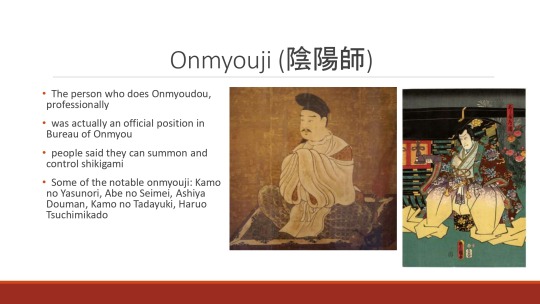
Then, we have Onmyouji, the person who does Onmyoudou professionally. You can say they are the practitioner of Onmyoudou. Back then, Onmyouji was an actual official position in the Bureau of Onmyou. They were recognized by society and the government as legal jobs. People at that time also believed that they could summon and control shikigami. Some of the notable onmyouji was Kamo no Yasunori, Abe no Seimei, Ashiya Douman, Kamo no Tadayuki, and Haruo Tsuchimikado.

From what I know, here are the simple differences between Onmyouji and Jujutsushi. They are somewhat similar to each other and I think they only have slight differences, not that much.
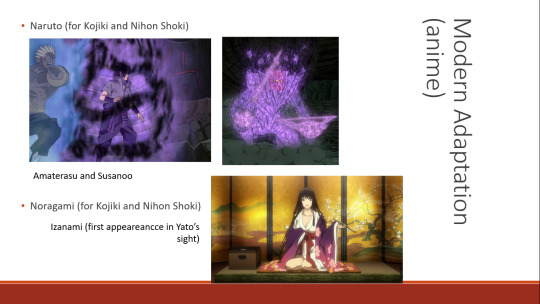

Nowadays, we can still see some of the modern adaptations of literary works actually adapting the stories about stuff I explained before. Here I made a list of the modern adaptation (anime) that used the stories related to Onmyouji or Jujutsushi. Personally, I really like Jujutsu Kaisen. There is actually a continuation of this presentation but I think I’m not going to talk about it now. That’s it. That’s all I know. Hopefully, it could be a simple guide for you guys who is interested in Onmyouji-related stuff or just as extra knowledge. Thank you for reading!

#onmyouji#onmyoudo#jujutsushi#heian period#heian era#nara period#nara era#japan#japan history#nihon shoki#kojiki#anime#noragami#naruto#xxxholic#sousei no onmyouji#tokyo raven#shaman king#jujutsu kaisen
302 notes
·
View notes
Text
The Chinese upper classes made lavish use of fragrance during the T’ang dynasties that began in the 7th century AD and continued until the end of the Ming dynasty in the 17th century. Their bodies, baths, clothing, homes and temples were all richly scented, as was ink, paper, cosmetics and sachets tucked into their garments. China imported jasmine-scented sesame oil from India, Persian rosewater via the silk route and, eventually, Indonesian aromatics – cloves, gum benzoin, ginger, nutmeg and patchouli – through India.
The famous Materia Medica Pen Ts’ao was published in China during the 16th century. It discusses almost 2000 herbs and contains a separate section on 20 essential oils. Jasmine was used as a general tonic; rose improved digestion, liver and blood; chamomile reduced headaches, dizziness and colds; ginger treated coughs and malaria - History of cosmetics, S K Chaudhri, N K Jain
298 notes
·
View notes
Text
T'ang dynasty Era lamellar armour and helmet
T’ang dynasty Era lamellar armour and helmet
A recreation of a T’ang dynasty Era (or a generic Tang-type) lamellar cuirass and helmet. Creators unknown: felicitations to them for their superb work.
(more…)

View On WordPress
#China#Chinese#Chinese culture#Chinese Empire#medieval warfare#Military#Military history#Military technology#Tang China#Tang Dynasty
2 notes
·
View notes
Text
The Kimono and It’s Development
“To think of clothes only in terms of efficiency is to disregard the human element. If people have to work, they also have to play.” - P.12
Causes of Early Development
Climate
As an island nation, Japan suffers from extremely hot and humid summers, thus the need for something that wouldn’t cause heat exhaustion was dearly needed
Constructing wooden-framed buildings
This is linked to the Japanese tradition of sitting on the floor, which arose a need for something that is easy to sit on the floor in.
Side Note!
There is evidence that in early Japanese times, there was a period where it was common for everyone to wear dress consisting of separate upper and lower garments like in the West.
Early Influences: The Chinese Hanfu and Juni-Hitoe
China’s T’ang Dynasty (618-907) had a big influence on Japan in terms of fashion during the Japanese Nara Period (710-784)
Japan really liked the Chinese ‘Hanfu’ and used that style of dress. Japanese nobility grew out of the style slightly around the 10th century during the Heian Period, but the commoner class would continue to dress in a ‘Hanfu’ like garment until the Kamakura Period (1192-1333)
Interestingly enough, the hanfu is making a come back in current Chinese fashion
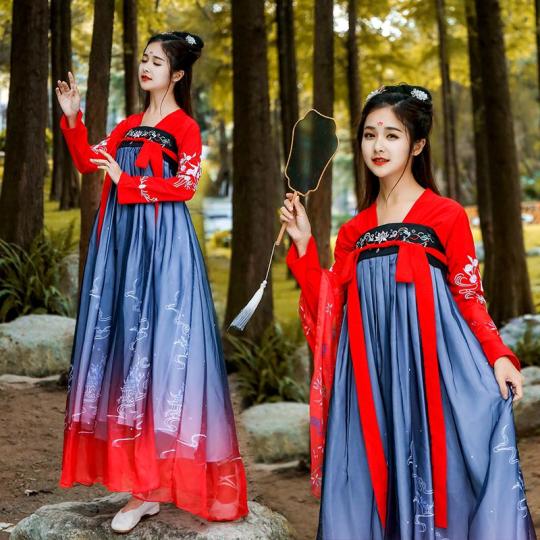
Roughly what a hanfu would look like. Photo pulled from here. If anyone knows of any museums with public photos of extant hanfu please message me so I can change this picture.
The Heian Period brought about the style of ‘Juni-Hitoe’ (“twelve robes”) which only high ranking noble women wore for specific occasions. This style, though only worn by a small number of people, and only during certain occasions, is essential to the development of the kimono, as we shall see later.
[talking about the robes used] “Each one was simple in color and design, but the aim was the complex beauty at the collar and sleeve openings, where the color of all twelve robes were visible.” -P. 25

Photo pulled from here.
Kamakura Period: Politics enters the world of fashion (unsurprisingly)
The Kamakura Period marked a big political change for Japan. The Taira Family, which had been running the court system of Japan, had been taken over by the samurai class, marking the end of the Heian Period. The samurai, now in charge of the nation, were looking to separate themselves from what had come before. They wanted to create their own culture.
Kamakura Period women, looking to separate themselves from the previous Heian noblewomen, slowly changed from wearing multilayers (“kasame-gi”) to a single layer (“hitoe-gi”).
Enter the Kosode
The Kosode was originally the undergarment robe worn when a lady wore the Juni-Hitoe style. Now that women were only wearing one robe, the kosode transitioned from an undergarment to an outer garment.
“Kosode is an old name for the form of dress that is now usually simply called kimono.” - P.13
A Necessary Side Note: Characterizing Kimono Types
I find it easiest to think of kimono as an umbrella term, because kimono have different names depending on the type of sleeve it has and/or the type of material it is made of and/or the occasion it would be worn on. This is important to note when looking at extant garments to understand who would have worn it, when, and why. The different types of kimono covered in this book are…
Kosode (“small sleeves”)
Oftentimes sleeves are totally sewn shut; looking to the picture we see there is no gap between the torso section and the sleeves. Also we see that the sleeves are a bit short.
Ended up being associated with the lower class for a while

Photo Source
Second half of the Edo Period
Silk and metallic thread embroidery with resist dyeing on satin damask
Cherry blossoms, a fence, and carriage wheels The Met
Hirosode (“wide sleeves”)
Wide as in arm to floor length
Sleeve end left open
Worn by the upper class for a while
Osode (“large sleeves”)
Large as in shoulder to wrist length
Furisode (“swinging sleeves”)
Only a quarter of the sleeve is open
Considered a special type of kosode

Photo Source 1912-1926 Silk crepe; freehand paste-resist dyed, embroidered in silk and metallic threads with applied gold and silver Boat filled with flowers on swirling water, pine tree, plum blossoms and maples The Khalili Collection
By this point (end of the Kamakura Period, beginning of the 13th century) we essentially have today’s kimono. This garment will not be seeing any more physical alterations. However, the kimono will go through many design/patterning/technique shifts from this point forward. The book continues to refer to kosode specifically, so I shall as well.
“Again, however unique it may be, unless it is also aesthetically pleasing, it is not worth the nation’s pride.” - P.10
Azuchi-Momoyama Period: When Color Filled the Streets
Up until this point (~1300 all the way to ~1573) the kosode would remain frugal and simple so as to adhere to the samurai way of life until…
The period of 1573-1603 (Azuchi-Momoyama Period) had a strong focus on abandoning the old and letting in the new after years of warfare. Class was ignored and creative freedom reigned. There was a large focus on personal freedom.
Men began exploring more color and design in their clothing

Photo Source
Late Azuchi-Momoyama Period
Plain weave with un-glossed warps and glossed wefts silk
Paulownia leaves and arrows
Dofuku worn by Toyotomi Hideyoshi
Kyoto National Muesum
Better pictures here.
Red light districts and theaters went crazy with their fashion during this period
“Prostitution was a way of keeping alive for women who found themselves in reduced circumstances as a result of the wars… the women wore kosode of striking design. Most of the kosode of that period left today are garments once worn by members of wealthy families; no example of kosode used by courtesans is extant. Perhaps such garments were used until they were completely worn out.” - p.32
Sadly this period only lasted from 1573-1603 and then…
Edo Period: The Lame People Take Over
During this period the shogunate emphasized people acting within their class status. There were many new rules created desperately trying to regulate fashion. However, as many rules as they made, rules can never stop the creative flow of fashion.
There would actually be a shift away from the kosode to focus on the obi and what a person could do with it creatively.
The licensed district (approved red light districts) and theaters became hot spots of fashion.
“The fact that the licensed quarters acted as a hothouse for the development of the impractical hairstyles of the time, with their ornamental combs and hairpins, is an indication of how eagerly personal adornment was pursued in the island of freedom.” -p.39
It was during this period that the theater truly began to change the fashion world…
Part 2
#kimono#historical fashion#japanese historical fashion#fashion#research#research notes#historical#japan#kimonos#kosode
16 notes
·
View notes
Text
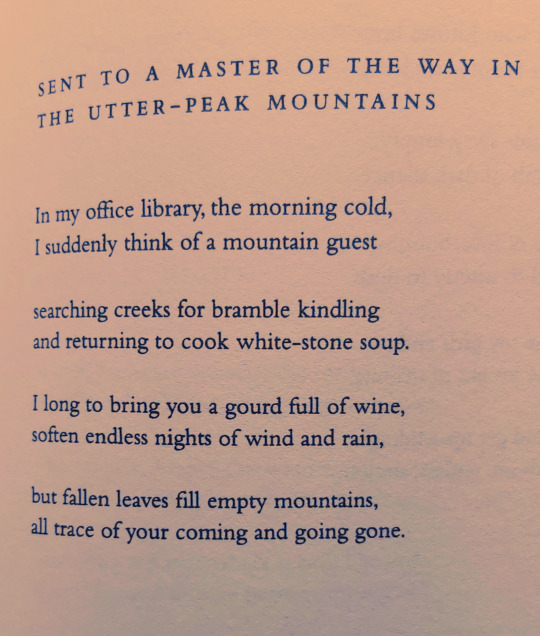
[SENT TO A MASTER OF THE WAY IN THE UTTER-PEAK MOUNTAINS
In my office library, the morning cold,
I suddenly think of a mountain guest
searching creeks for bramble kindling
and returning to cook white-stone soup.
I long to bring you a gourd full of wine,
soften endless nights of wind and rain,
but fallen leaves fill empty mountains,
all trace of your coming and going gone.]
Wei Ying-Wu, T’ang Dynasty, c. 737-792
#wangxian#lan wangji#wei wuxian#lan zhan#wei ying#poetry I read often#wei ying-wu#tang dynasty#chinese poetry#chinese poet#from ZiZhen's library#ouyang zizhen#mdzs#the untamed#cql#mo dao zu shi#I got plenty more if you guys want them
56 notes
·
View notes
Photo
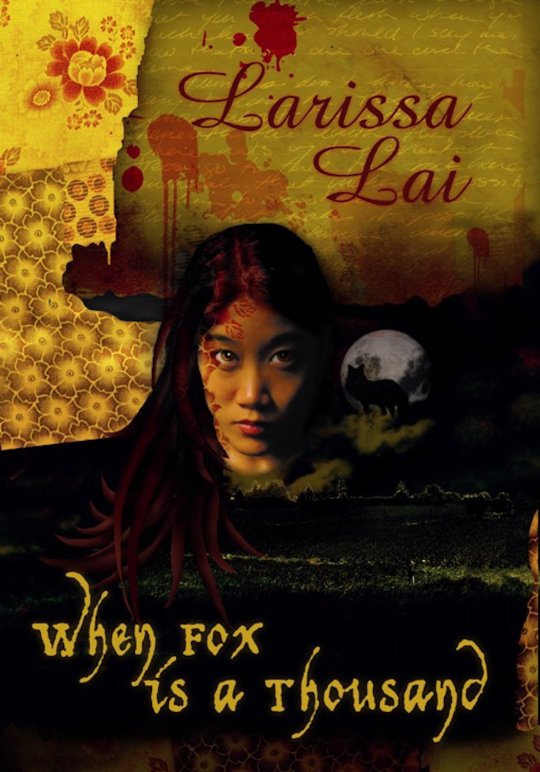
TPIJ Book Recommendations: “When Fox is a Thousand” by Larissa Lai*
Representation: Lesbian
A fox spirit comes to haunt Artemis Wong, a young woman living in contemporary Vancouver. The Fox brings with her the history of another haunting, that of the T’ang Dynasty poet Yu Hsuan-Chi, who was accused of having murdered the young maid servant who once worked for her.
Part history, part fairytale, part urban discontent, this delightful novel cracks open all preconceptions about Asian women, gender, sexuality, family, faith and the flow of time.
*Author of Color
#mine#tpij#take pride in june#take pride in july#lgbt books#book recommendations#when fox is a thousand#larissa lai
16 notes
·
View notes
Audio
Welcome to my first post in the Oku no Hosomichi series, in which I read aloud the work in chronological, brief portions and provide backstory necessary to understand the work.
The moon and sun are eternal travelers. Even the years wander on. A lifetime adrift in a boat, or in old age leading a tired horse into the years, every day is a journey, and the journey itself is home. From the earliest times there have always been some who perished along the road. Still I have always been drawn by windblown clouds into dreams of a lifetime of wandering. Coming home from a year’s walking tour of the coast last autumn, I swept the cobwebs from my hut on the banks of the Sumida just in time for New Year, but by the time spring mists began to rise from the fields, I longed to cross the Shirakawa Barrier into the Northern Interior. Drawn by the wanderer-spirit Dousojin, I couldn’t concentrate on things. Mending my cotton pants, sewing a new strap on my bamboo hat, I daydreamed. Rubbing moxa into my legs to strengthen them, I dreamed a bright moon rising over Matsushima. So I placed my house in another’s hands and moved to my patron Mr. Sampuu’s summer house in preparation for my journey. And I left a verse by my door:
Classical: 草の戸も住替る代ぞ雛の家
Romaji: Kusa no to mo / sumikawaru yo zo / hina no ie
English: Even this grass hut / may be transformed / into a doll’s house
The opening line of this work, “The moon and sun are eternal travelers,” echoes the famous preface to a poem “Peach Garden Banquet on a Spring Night” by the T’ang dynasty poet Li Po.
The “doll’s house” mentioned here is in reference to the doll displays families with daughters put out during Hina Matsuri, a.k.a. Girl’s Festival.
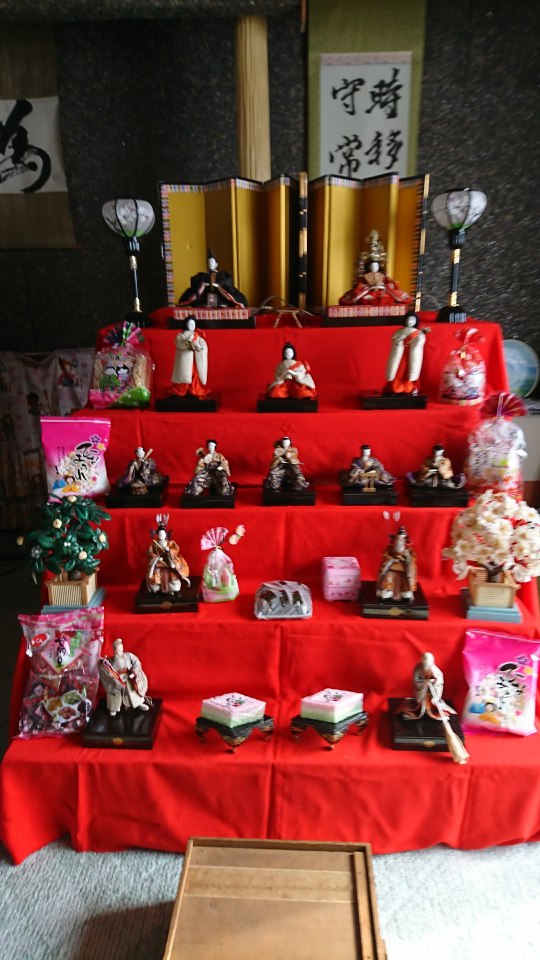
During Hina Matsuri, families put out elaborate displays of a royal Heian Family. Each doll represents a phase of life for a husband and wife, from the young lord and lady at the top to the old man and woman at the bottom. Not all of them are this elaborate, but it just so happens that my friend’s family has this beautiful one that has been passed down for around 100 years.
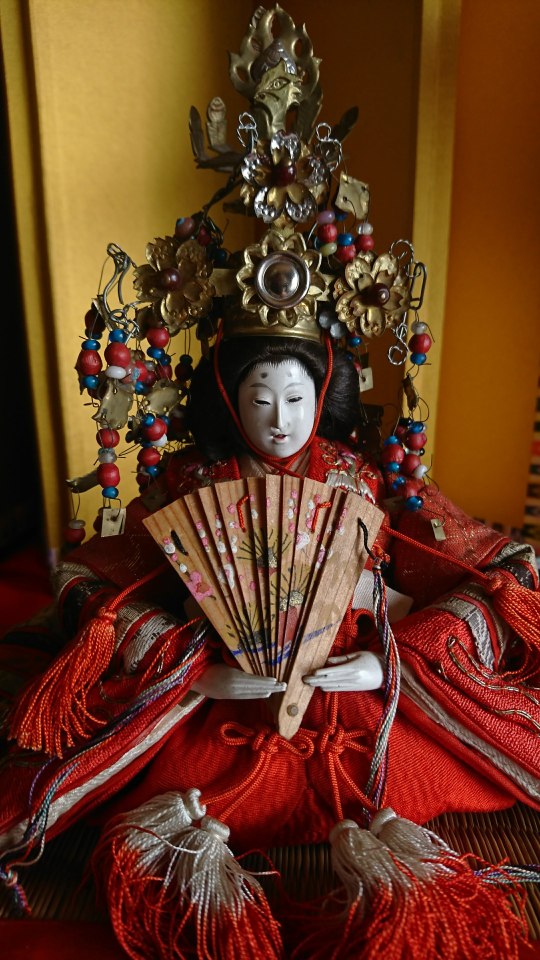
Just look at the detail that has gone into each of these dolls! Absolutely stunning!
Anyways, what Basho means when he says his home can become a doll house is that, compared to patron’s mansion, it is a very tiny, humble abode.
That’s all for this post! This is my first time doing something like this, and I’m a bit rusty reading aloud. If you have any tips or anything at all, please let me know!
#japanese language#japanese culture#japanese literature#japanese poetry#haiku#haibun#classical literature#matsuo basho#oku no hosomichi#learn japanese#study japanese#hina matsuri#girl's day#omoi no hoka reads oku no hosomichi
74 notes
·
View notes